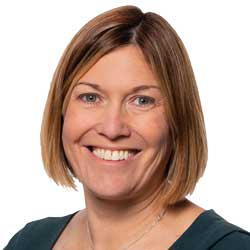Resident engagement for greater governance
Encouraging residents to join housing association boards and committees not only makes sense, it makes for a more responsive and empathetic organisation

GOVERNANCE
Image: Istock

Emma Palmer
CEO, Eastlight Community Homes
Issue 64 | February 2023
Having residents on the board of housing associations makes sense. It ensures, for example, that we balance appropriate charging with investment in our homes, and that services are truly designed with the resident in the forefront of our minds.
But having residents sit on multiple boards makes even more sense. It ensures that best practice is shared, and will enable a uniformity of excellence to emerge, nationwide.
With a portfolio of some 12,500 homes, Essex-based Eastlight Community Homes is the largest community-led housing association in England. Residents sit on our board, setting the strategic direction of the organisation and monitoring performance. Residents also sit on – and in one case chair – our committees, scrutinising and influencing service delivery at a micro level.
Ensuring resident voices are heard
Michelle Baker is a prime example. A freelance accountant and mother of two severely disabled boys, she chairs our customer influence committee, sits on the board, and is well placed for future chair recruitment rounds. But she also sits on the board of another housing association.
“I’m not here to make the EDI [equality, diversity and inclusion] figures look good”, she says. “I’m here to make positive and lasting change for residents like me. And if I can do that on behalf of tens of thousands of residents in multiple housing associations, then all well and good.”
Catherine Turner is another of our resident board members. She uses a wheelchair and is significantly visually impaired.
“I see the issues residents face through a different prism. If the organisation is going to truly understand the issues faced by its disabled residents, and ensure our various needs and wishes are met, then I had to make my voice heard and get involved.”
Effective and accessible governance should not just be limited to seats around the table, however.
Alternative opportunities
A recent survey of 500 of our residents suggested that fewer than 2% have the time, or interest, to become board members or non-executive directors.
But a whopping 22% said they want to be involved in other ways.
Launched last year, our All In programme provides one such opportunity for the 22%. Powered by Eastlight, the year-long programme gives residents the space and financial ability (we pay them a salary) to work together to address social problems – from isolation to the cost-of-living crisis.
Our Resident Academy, launched in December, is another way we are making governance accessible. It provides residents with an understanding of the history of social housing in England, a weekend residential course to identify and focus innate skills and interests, and then provides our graduates with meaningful ways they can help shape service delivery.
Some of them will go on to sit on a Communications Advisory panel, working closely with our comms team to ensure our communications and engagement activities are accessible, relevant and beneficial.
Responsive organisation
Residents challenge us. They challenge why we do things, how we do things and when we do things. And that can feel painful. But what emerges from our relentless drive to engage, involve, and empower our residents, is a provider of social housing that is becoming a truly responsive, empathetic and thriving organisation.
So, what’s not to like? Being driven, advised, and led by the very people who live in our homes is surely a model to copy in the pursuit of integrity, authenticity and excellence?
Do housing associations do enough to involve their residents? Do they encourage them to follow the path which Michelle has embarked upon – sharing her experience not just at conferences, but by sitting on several boards, promulgating and evangelising best practice, and confronting anything that falls short?
“Residents challenge us. They challenge why we do things, how we do things and when we do things. And that can feel painful.”

